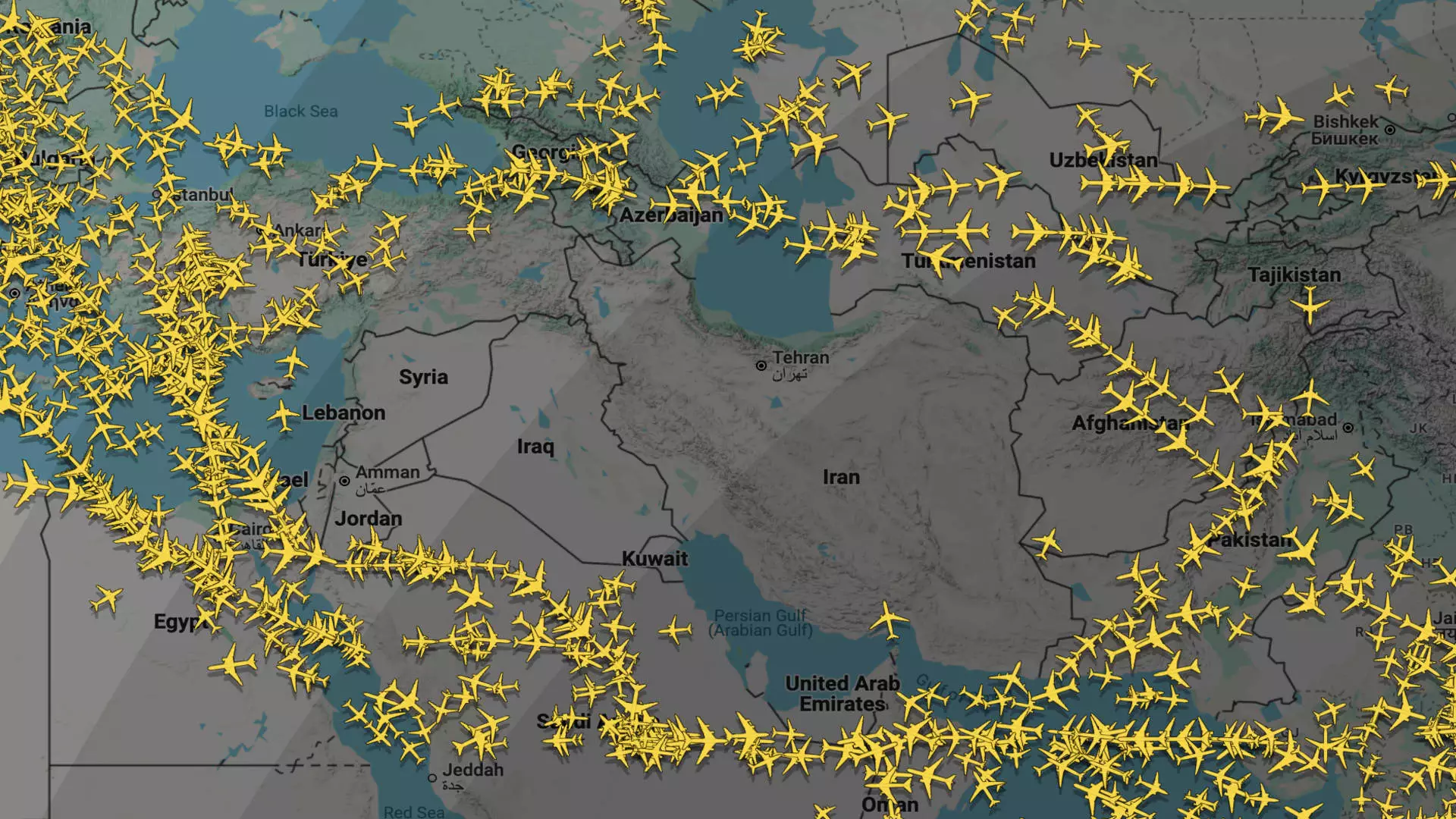Recent military confrontations in the Middle East have led to significant disruptions for airlines operating in the region. Following a missile strike by Iran’s armed forces on a U.S. military base in Qatar, more than 20 commercial flights bound for Doha were diverted, highlighting the chaotic repercussions of geopolitical strife. As airlines navigate the treacherous waters of regional conflicts, safety concerns loom large, forcing carriers to alter established routes and reevaluate their operations altogether.
The Ripple Effect on Airline Operations
With escalating military tensions, major airlines such as British Airways have acted swiftly, canceling numerous flights to Doha through midweek. The call for cancellations stemmed from a commitment to prioritize passenger safety amid uncertain conditions. Other international carriers including Air France and Iberia have either put on hold or significantly delayed their return to certain Middle Eastern destinations in response to the evolving crisis. The ramifications of these decisions indicate a severe disruption in air travel, with countless passengers facing uncertainty as airlines scramble to manage the situation effectively.
Airspace Closures and Increased Caution
Flight-tracking platforms like Flightradar24 have reported the closure of airspace over the UAE, with Bahrain also temporarily shutting its airways. Such actions are understandable in light of the heightened threat level, as governments prioritize the safety of both their citizens and international travelers. For airlines, the response translates into longer flight paths and altered itineraries, directly affecting operational costs and logistical planning. The reliance on alternative routes not only increases fuel expenses but also leads to heightened delays, compounding the challenges faced by the aviation industry.
Comparison to Other Global Conflicts
The situation in the Middle East resonates with the parallel disturbances created by the prolonged conflict in Ukraine. Airlines have shown an aversion to engaging in airspace around conflict zones, opting for longer flights which inevitably lead to increased operational costs. This duality of conflict zones underscores the complexities and risks airlines must navigate as they balance economic sustainability with unwavering safety standards.
Navigating Passenger Sentiment and Safety Concerns
Beyond operational adjustments, airlines are also grappling with passenger sentiment. As anxiety mounts among travelers about safety while flying over volatile regions, airlines have a moral obligation to communicate effectively with customers. The decision-making process may reflect broader concerns, pushing airlines to prioritize transparency and clarity in their operations.
In terms of commercial impacts, the intertwined narratives of aviation disruptions and geopolitical strife prompt stakeholders to reconsider their approach to risk management. The dual effects of these conflicts signal a need for airlines to innovate in crisis response strategies that not only safeguard their operations but also foster confidence among travelers in uncertain times.

